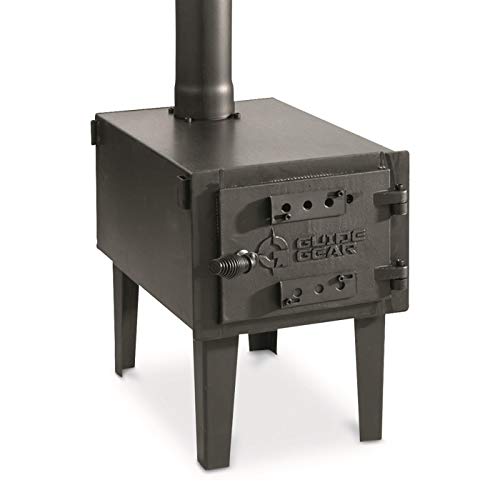What's The Job Market For Wood Burning Fire Professionals?
페이지 정보
작성자 Ulrike 작성일24-05-26 23:46 댓글0건관련링크
본문
The Dangers of a Wood Burning Fire
A wood burning fire - funny post, can offer a warm and enjoyable experience. It also produces harmful combustion by-products. It is important to learn about the process of burning wood and how to use your fireplace.
Choose the seasoned or Kiln dried logs. Logs that are seasoned hold less moisture and are more likely to burn hotter and longer than unseasoned logs.
Burning Time
The burning of wood is a very efficient and traditional method of heating. This fire can emit pollutants both indoors and outdoors which are detrimental to the human body. The use of a properly-designed fireplace can help reduce the negative impacts of burning wood.
 The amount of time a wood fire lasts will depend on how hot it is. The temperature of the fire can affect the amount of smoke that is generated, as well as the amount of carbon monoxide released. If carbon monoxide levels are high, they could hinder the escape of occupants from a burning structure. To prevent this, it is important to keep the fire at the lowest temperature.
The amount of time a wood fire lasts will depend on how hot it is. The temperature of the fire can affect the amount of smoke that is generated, as well as the amount of carbon monoxide released. If carbon monoxide levels are high, they could hinder the escape of occupants from a burning structure. To prevent this, it is important to keep the fire at the lowest temperature.
In the initial stage of a wood-fire, volatile gases like methane and Methanol are released from the cellulose of the wood. These gases can be non-combustible or combustible, based on the moisture content and the pyrolysis temperature of the sample. The temperature of the process can rise to 325 degrees Celsius. At this point cellulose begins to decompose and form tar and charcoal. This process is known as wood pyrolysis.
 In addition to volatile gases, burning wood releases a range of other harmful combustion products, such as dioxins and polyaromatic hydrocarbons (PAHs). PAHs have been linked with cancer and other diseases in humans as well as in animals. They also can affect soil and water. It is essential to burn wood in a location which is adequately ventilated to reduce the effects of PAHs.
In addition to volatile gases, burning wood releases a range of other harmful combustion products, such as dioxins and polyaromatic hydrocarbons (PAHs). PAHs have been linked with cancer and other diseases in humans as well as in animals. They also can affect soil and water. It is essential to burn wood in a location which is adequately ventilated to reduce the effects of PAHs.
A wood stove that has an extended burn capacity can keep visible flames while using a minimal amount of fuel. This method of burning involves layering the wood with lighter kindling and heavier logs to stop the fire from burning out too fast. This technique can be used to build a an open flame that generates large amounts of heat for use at night or even while at work.
The length of the fire is determined by a variety of factors, including the moisture content in the wood. Dry wood burns faster than damp wood. The sample surface's absorptivity also affects the duration of its burning. Simms [59] observed that the critical heat flux required to ignite mahogany and oak samples was significantly lower with coated surfaces than those without.
Temperature
The temperature of the fire is extremely crucial. It affects how fast it burns and the heat it produces. It also affects how dangerous it is to burn yourself. It also affects the amount of smoke produced. If there is a lot of smoke, it could irritate the throat and eyes and cause irritation, so it is recommended to avoid breathing in it.
When wood burns, it releases plenty of heat and can reach high temperatures. The temperature of the fire will be affected by the type of wood used wood burning stoves and the amount of moisture. For instance wet wood has less heat than dry wood. This is because wet wood can absorb more water and less heat. It is important to use dry wood, and you should also make sure that the wood has been seasoned before burning it.
When the wood reaches its highest temperature of combustion, it will release a lot of heat and ash. The amount of ash released will depend on the type of burning wood and the heat at which it is burning. Some woods, such as oak and larch, release very little ash when they burn. Others, such as birch, can create large amounts of ash.
When the wood starts to burn it goes through a three-stage process referred to as pyrolysis. This process starts by a chemistry reaction which converts the organic compounds within the wood into methane and carbon dioxide. The resulting gases are absorption into the air. When the wood is heated, the gases will rise and ignite the wood's surface and create a flame that will heat the wood until it explodes.
It is essential to avoid touching the fire with bare skin, as it can cause burns. Avoid touching the wood-burning fire with your hands since it could cause serious burns. You can lower the risk of burns by wearing a pair of gloves and working in a well-ventilated space. Wearing a mask is also recommended when working with wood-burning fires to avoid breathing in smoke.
Smoke
Wood burning fires generate smoke, a mixture of fine particles and gases (also known as particulate matter, or PM) that contain harmful air pollutant. PM from wood combustion can contain harmful organic compounds, such as benzene, formaldehyde and polycyclic aromatic hydrocarbons as well as minerals like calcium, potassium and magnesium. The presence of these particles can lead to a range of health issues, including cardiovascular and respiratory diseases as well as cancer. Inhaling wood smoke can also cause people to breathe CO, an odorless, colorless gas that is deadly in small doses.
The smoke that is produced by wood fires is mostly due to volatile organic compounds (hydrocarbons) which evaporate from the burning material. The smoke also contains some water vapor, wood burning Fire a byproduct of incomplete combustion (such as creosote) as well as a small amount of unburned material, also known as ash.
When choosing the type of wood to use in your fireplace or woodstove it is recommended to choose firewood that is seasoned. Logs that have been split, stored out of the elements and allowed to dry until they have been matured (a moisture content of 20-25 percent) will burn slower and produce less creosote. A log's knock on both sides is a good method to determine the amount of moisture. Damp wood will have a sluggish sound, while seasoned logs will make a sharp sound.
When the heat produced by wood fire draws air from surrounding it and the smoke and other byproducts of combustion are released through the chimney. If the ventilation system of the house is not adequate and the chimney is not properly ventilated, it may be unable draw enough air, and create an air draft back. This can cause the byproducts of the fire to build up within the home. This could lead to a buildup of dangerous carbon monoxide, as well in flammable creosote and cinders.
Smoke from fires that burn wood can be especially hazardous to people over the age of 65, those suffering from lung or heart conditions as well as children and outdoor enthusiasts. These individuals are more likely to experience adverse health effects from smoke from wildfires like COVID-19 symptoms, as well as aggravated asthma and chronic heart and lung diseases.
Safety
When you are using a wood-burning fire, there are certain steps you can take to reduce the chance of fire damage and accidents. For example it is recommended to make use of a fireplace or wood stove screen and keep anything that is flammable at least 3 feet away from it. Smoke and carbon monoxide detectors should be installed in your home to alert you when dangerous gases are detected. It is also important to never leave a flame burning unattended, as even a tiny spark can cause an explosion. You should also only use a metal ash bucket and a shovel to remove ashes from your fireplace or wood stove. Keep the ash away from anything that could ignite.
Lighting the Fire
To start a fire first lay a layer of dry and broken logs on top of a bed of ash. Add a layer of twigs, kindling and ash to the pile. Make sure there is enough space between each piece of wood to allow for air flow, as this will help prevent the fire from dying out too quickly. Add a few firelighters for extra assistance in getting your fire going.
Open an opening to let the fire breathe the oxygen it needs to make it burn brightly. This is particularly important for modern homes that are often tightly sealed and have no natural airflow or drafts.
Once your fire has built up, you can begin adding progressively larger pieces of wood to it. It is important to keep in mind that even seasoned hardwoods like oak and hickory can produce plenty of creosote when they are burned.
If you can, only use kiln-dried or seasoned wood in order to minimize the possibility of creosote build-up up in your chimney. If you must use fresh or green firewood, you must be extremely cautious because it will create more smoke and result in more creosote.
A wood burning fire - funny post, can offer a warm and enjoyable experience. It also produces harmful combustion by-products. It is important to learn about the process of burning wood and how to use your fireplace.
Choose the seasoned or Kiln dried logs. Logs that are seasoned hold less moisture and are more likely to burn hotter and longer than unseasoned logs.
Burning Time
The burning of wood is a very efficient and traditional method of heating. This fire can emit pollutants both indoors and outdoors which are detrimental to the human body. The use of a properly-designed fireplace can help reduce the negative impacts of burning wood.
 The amount of time a wood fire lasts will depend on how hot it is. The temperature of the fire can affect the amount of smoke that is generated, as well as the amount of carbon monoxide released. If carbon monoxide levels are high, they could hinder the escape of occupants from a burning structure. To prevent this, it is important to keep the fire at the lowest temperature.
The amount of time a wood fire lasts will depend on how hot it is. The temperature of the fire can affect the amount of smoke that is generated, as well as the amount of carbon monoxide released. If carbon monoxide levels are high, they could hinder the escape of occupants from a burning structure. To prevent this, it is important to keep the fire at the lowest temperature.In the initial stage of a wood-fire, volatile gases like methane and Methanol are released from the cellulose of the wood. These gases can be non-combustible or combustible, based on the moisture content and the pyrolysis temperature of the sample. The temperature of the process can rise to 325 degrees Celsius. At this point cellulose begins to decompose and form tar and charcoal. This process is known as wood pyrolysis.
 In addition to volatile gases, burning wood releases a range of other harmful combustion products, such as dioxins and polyaromatic hydrocarbons (PAHs). PAHs have been linked with cancer and other diseases in humans as well as in animals. They also can affect soil and water. It is essential to burn wood in a location which is adequately ventilated to reduce the effects of PAHs.
In addition to volatile gases, burning wood releases a range of other harmful combustion products, such as dioxins and polyaromatic hydrocarbons (PAHs). PAHs have been linked with cancer and other diseases in humans as well as in animals. They also can affect soil and water. It is essential to burn wood in a location which is adequately ventilated to reduce the effects of PAHs.A wood stove that has an extended burn capacity can keep visible flames while using a minimal amount of fuel. This method of burning involves layering the wood with lighter kindling and heavier logs to stop the fire from burning out too fast. This technique can be used to build a an open flame that generates large amounts of heat for use at night or even while at work.
The length of the fire is determined by a variety of factors, including the moisture content in the wood. Dry wood burns faster than damp wood. The sample surface's absorptivity also affects the duration of its burning. Simms [59] observed that the critical heat flux required to ignite mahogany and oak samples was significantly lower with coated surfaces than those without.
Temperature
The temperature of the fire is extremely crucial. It affects how fast it burns and the heat it produces. It also affects how dangerous it is to burn yourself. It also affects the amount of smoke produced. If there is a lot of smoke, it could irritate the throat and eyes and cause irritation, so it is recommended to avoid breathing in it.
When wood burns, it releases plenty of heat and can reach high temperatures. The temperature of the fire will be affected by the type of wood used wood burning stoves and the amount of moisture. For instance wet wood has less heat than dry wood. This is because wet wood can absorb more water and less heat. It is important to use dry wood, and you should also make sure that the wood has been seasoned before burning it.
When the wood reaches its highest temperature of combustion, it will release a lot of heat and ash. The amount of ash released will depend on the type of burning wood and the heat at which it is burning. Some woods, such as oak and larch, release very little ash when they burn. Others, such as birch, can create large amounts of ash.
When the wood starts to burn it goes through a three-stage process referred to as pyrolysis. This process starts by a chemistry reaction which converts the organic compounds within the wood into methane and carbon dioxide. The resulting gases are absorption into the air. When the wood is heated, the gases will rise and ignite the wood's surface and create a flame that will heat the wood until it explodes.
It is essential to avoid touching the fire with bare skin, as it can cause burns. Avoid touching the wood-burning fire with your hands since it could cause serious burns. You can lower the risk of burns by wearing a pair of gloves and working in a well-ventilated space. Wearing a mask is also recommended when working with wood-burning fires to avoid breathing in smoke.
Smoke
Wood burning fires generate smoke, a mixture of fine particles and gases (also known as particulate matter, or PM) that contain harmful air pollutant. PM from wood combustion can contain harmful organic compounds, such as benzene, formaldehyde and polycyclic aromatic hydrocarbons as well as minerals like calcium, potassium and magnesium. The presence of these particles can lead to a range of health issues, including cardiovascular and respiratory diseases as well as cancer. Inhaling wood smoke can also cause people to breathe CO, an odorless, colorless gas that is deadly in small doses.
The smoke that is produced by wood fires is mostly due to volatile organic compounds (hydrocarbons) which evaporate from the burning material. The smoke also contains some water vapor, wood burning Fire a byproduct of incomplete combustion (such as creosote) as well as a small amount of unburned material, also known as ash.
When choosing the type of wood to use in your fireplace or woodstove it is recommended to choose firewood that is seasoned. Logs that have been split, stored out of the elements and allowed to dry until they have been matured (a moisture content of 20-25 percent) will burn slower and produce less creosote. A log's knock on both sides is a good method to determine the amount of moisture. Damp wood will have a sluggish sound, while seasoned logs will make a sharp sound.
When the heat produced by wood fire draws air from surrounding it and the smoke and other byproducts of combustion are released through the chimney. If the ventilation system of the house is not adequate and the chimney is not properly ventilated, it may be unable draw enough air, and create an air draft back. This can cause the byproducts of the fire to build up within the home. This could lead to a buildup of dangerous carbon monoxide, as well in flammable creosote and cinders.
Smoke from fires that burn wood can be especially hazardous to people over the age of 65, those suffering from lung or heart conditions as well as children and outdoor enthusiasts. These individuals are more likely to experience adverse health effects from smoke from wildfires like COVID-19 symptoms, as well as aggravated asthma and chronic heart and lung diseases.
Safety
When you are using a wood-burning fire, there are certain steps you can take to reduce the chance of fire damage and accidents. For example it is recommended to make use of a fireplace or wood stove screen and keep anything that is flammable at least 3 feet away from it. Smoke and carbon monoxide detectors should be installed in your home to alert you when dangerous gases are detected. It is also important to never leave a flame burning unattended, as even a tiny spark can cause an explosion. You should also only use a metal ash bucket and a shovel to remove ashes from your fireplace or wood stove. Keep the ash away from anything that could ignite.
Lighting the Fire
To start a fire first lay a layer of dry and broken logs on top of a bed of ash. Add a layer of twigs, kindling and ash to the pile. Make sure there is enough space between each piece of wood to allow for air flow, as this will help prevent the fire from dying out too quickly. Add a few firelighters for extra assistance in getting your fire going.
Open an opening to let the fire breathe the oxygen it needs to make it burn brightly. This is particularly important for modern homes that are often tightly sealed and have no natural airflow or drafts.
Once your fire has built up, you can begin adding progressively larger pieces of wood to it. It is important to keep in mind that even seasoned hardwoods like oak and hickory can produce plenty of creosote when they are burned.
If you can, only use kiln-dried or seasoned wood in order to minimize the possibility of creosote build-up up in your chimney. If you must use fresh or green firewood, you must be extremely cautious because it will create more smoke and result in more creosote.
댓글목록
등록된 댓글이 없습니다.








